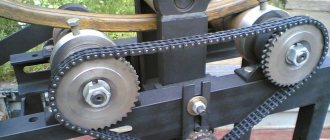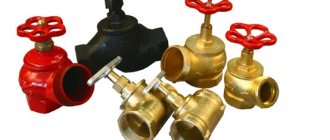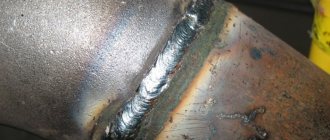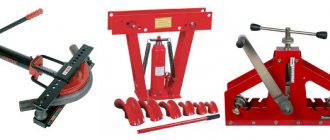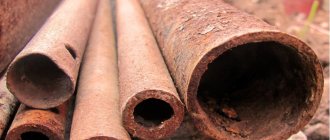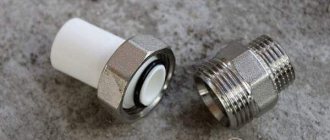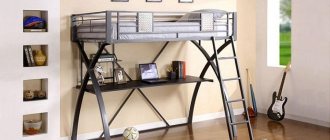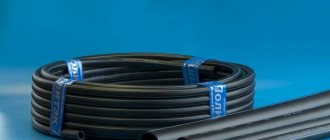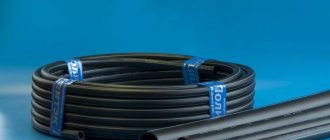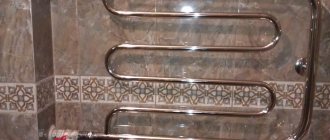When performing repair work, it often becomes necessary to change the configuration of pipes in order to give them the required shape. This result can only be achieved using a special tool. But purchasing a device for the sake of performing only a few operations is impractical. However, every craftsman should make sure that he has a pipe bender in his arsenal, since bending a pipe product may be required at the most unexpected time.
In domestic conditions and for small volumes of work, manual pipe benders are used
General information
This instrument differs in its design by a number of features. It is thanks to them that it is possible to bend pipes, including metal ones, without any problems, giving them a given angular radius with minimal physical effort. Such equipment is divided into several types:
- manual pipe benders;
- hydraulic pipe benders. Models of this type can also be classified as hand tools;
- mandrel;
- spring.
But there are devices of other designs:
- electromechanical;
- segmental;
- crossbow
All of the above tools have positive and negative qualities, but each of them allows you to bend a metal pipe product with a round cross-section without significant physical effort and in a short time.
The easiest option is to go to the nearest specialized store, which has devices of this type in its assortment. But a person who has experience in making a wide variety of devices with his own hands will be able to create a manual pipe bender at home.
You can purchase a factory-made tool, but it is quite possible to assemble it yourself from scrap materials
Device. Operating principle
The type of pipe bender largely determines its design. However, each device includes a standard set of elements. The key operating component is the pressure nozzle (pressure) on which pressure is applied. As a result of its influence, the bending angle of the pipe changes.
A manual pipe bender is characterized by a design that includes a spring with a lock, while electric devices are equipped with electric motors. The pressure is driven by these elements.
Regardless of the type of pipe bender, the unit includes several shafts (templates/rollers). They perform the function of stabilizing and regulating the bending radius of the workpiece. The impact on the pipe involves its preliminary fixation between the pressure plate and the shafts. The amount of bending that can be achieved is controlled by the position of the shafts. For example, if it is necessary to form an acute angle, the shafts are placed close to the pressure and one to the other.
Good to know! In a homemade pipe bender, this option is most often absent due to the simplicity of the design.
The type of equipment also determines the way it acts on the pipe. The methods are as follows:
- rolling (rolling). It uses 3 moving shafts. Bending radius is a value derived from the location of the support rollers in relation to the central shaft, which also exerts pressure on the pipe;
- impact on the pipe blank with a rod (crossbow method). In this case, two stationary rollers serve as support, and the pipe between them is bent by a template on the rod;
- winding When winding, the pipe is pressed against a rotating roller with a special clamp. In this case, the roller winds the workpiece, pulling it between itself and the stop;
- running-in In this method, the pipe bender clamps the ends of the pipe, the template remains stationary, while the pressure roller moves and bends the workpiece.
You can adjust the bending radius of the pipe using templates of different diameters
It should be noted the versatility of this tool: it can be used to bend various types of pipe products:
- plumbing;
- gas;
- boiler rooms, etc.
The pipes themselves can be made from:
- metal-plastic;
- aluminum;
- copper;
- become.
The only limitation concerns the diameter of the pipes: the value of this parameter should not exceed two inches.
Bending method
A profile pipe bending machine can operate as follows:
- Winding method;
- Run-in method;
- Rolling method;
- Extrusion method.
Roller pipe bender for profile pipe
Winding
The principle of operation of the first is as follows: using a special clamp, the pipe is pressed against the bending roller. Then the roller is rotated, while winding the product around itself. The roller rotates until the desired moment, that is, until the required angle is reached.
It is clear that the radius of the steel arcs will be determined only by the radius of the roller itself. For this reason, it is possible to change it.
Since this profile bending machine has a strong mechanical impact on the product, it may be damaged during operation. This is especially true for thin-walled steel, copper and other types of pipes. To prevent this from happening, the pipe bending machine comes with a special steel rod. This rod has a twisted end.
Its use is very simple - it is simply placed inside the pipe and does not allow it to deform. In addition to such a rod, a mandrel can be used, which consists of hinges and is therefore quite flexible. The principle of operation of this device is similar to the principle of operation of the rod.
Today, machines operating on the winding principle are the most common. The presence of additional devices such as a mandrel makes it possible to obtain very precise bends with a constant radius. Moreover, the rounding itself can have only 1.5 of the diameter of the product itself, or one and a half units of the length of the diagonal.
Similar units are used in aviation, the automotive industry, and other industries.
Electric pipe bender
Run-in
A roll forming machine for steel materials, which operates on the rolling principle, has a slightly different design. The profile is securely clamped between two rollers, one of which is completely stationary. After installing the product, the second roller begins to move around the static one, thereby bending the profile.
The radius of the arc will depend in this case on the dimensions of the stationary roller.
A roll forming machine of this type does not provide for the presence of steel rods or mandrels. Therefore, the minimum radius is limited - equal to at least 3 diameters of round products and 3 diagonal lengths for a rectangular profile.
Important! The two types of machines discussed above are initially intended for round products. However, in the absence of anything else, you can work with profiles.
Rolling
The roll forming machine, which operates on the rolling principle, is equally suitable for rectangular and round sections.
These units, for the most part, have as many as three rollers. All these rollers lie in the same plane, in addition, two of them are located on the same line.
The operating principle is as follows: the product is clamped between two rollers that lie on the same line. In this case, the third roller is brought to the product, pressing on it. This creates some pressure. Then the profile is set in motion, which forms an arc using the pressure of the third roller.
Components of a pipe bender
This design is convenient in that the radius is easily adjustable: the stronger the third roller presses from above on the profile, the smaller the radius of its bend.
Similar designs are used for the manufacture of rings, segment arcs, pipe spirals and many other products. In addition, to obtain a higher quality and more accurate spiral, a special mechanism can be installed on this profile bending unit, which is capable of raising the pitch of the coil.
Extrusion
In this case, the product will rest on two supports located at the edges. In this case, the roller, which is called a bending roller, will press on the pipe in the center. This causes deformation. Often these machines are called crossbow machines.
What gazebos made from profile pipes look like.
The nuances of working with a manual pipe bender
Let's look at the features of using this equipment using the example of its most popular types.
Crossbow pipe bender. For home craftsmen faced with the need to bend thin-walled pipe products made of brass, aluminum and copper, or thin metal-plastic pipes, such a tool is the best choice. It is excellent for working with pipes whose diameter varies in the millimeter range. At the same time, anyone with only basic technical skills can cope with the job.
The simplicity of the crossbow pipe bender design is realized by converting the force on the handle into the force of pressing the lever. Thus, the compressive force of the tool handle directly determines the bending angle of the final product. As practice shows, in order to form a smooth, deformation-free arc from a pipe with a bending angle of 90 degrees, the effort of one male hand is sufficient. But there is one requirement here: in order to avoid crumples or ruptures of the walls, it is necessary to select the correct punch. It must match the diameter of the workpiece being bent.
A simple crossbow pipe bender suitable for working with pipes up to 32 mm in diameter
Manual hydraulic pipe bender. Equipment of this type comes to the rescue when the capabilities of a crossbow pipe bender and hands alone are not enough. The device is ideal for metal pipes with a diameter of 12 ≤ D ≤ 100 millimeters. Before using a manual hydraulic pipe bender, make sure the cylinder rod is positioned correctly. In this case, it should be in a non-working position. That is, in order to prepare the unit for operation, the contractor will need to lift the bypass valve screw half a turn.
Note! Before work, it is necessary to place the hydraulic cylinder on a horizontal, flat surface and fix the lower crossbar.
To prepare a hydraulic manual pipe bending machine for work, take a bending shoe. Its marking must correspond to the diameter of the workpiece. Next, we attach this accessory to the hydraulic cylinder rod so that the punch takes a horizontal position on the pipe bender rod. Having installed the bending segment, insert the stops into the holes closest to the hydraulic cylinder. Now the manual pipe bender is completely ready for work.
Manual hydraulic pipe benders
This type of pipe bender, compared to crossbow benders, bends steel pipes with diameters from 12mm to 100mm, depending on the model. It is difficult to bend such pipes by hand, so hydraulics come to the aid of people. We will tell you more about the hydraulic cylinder in the article “Pipe Bending Device”.
So, let's return to the question “ How to work as a pipe bender ?” First you need to make sure that the hydraulic cylinder rod is in the non-working position. To do this, open (unscrew) the bypass valve screw half a turn. Next, you need to install the hydraulic cylinder on a flat surface and secure the lower crossbar to it. After installing the lower crossbar, you should select a bending template (punch) to match the diameter of your pipe. The next step is to install the bending template on the hydraulic cylinder rod. The template on the rod should be in a horizontal position.
If you still have no difficulties with the question “how to use a pipe bender?”, then we are on the right path. Next, after installing the template, all that remains is to insert two stops into the holes closest to the cylinder and close the upper cross-arm. The pipe bender is ready for work.
VIDEO:
The pipe bender is ready, but is the pipe ready?
Manual hydraulic pipe benders can be used to bend pipes whose wall thickness to outer diameter ratio is at least 0.06 mm. For example, a pipe with a diameter of 25mm, a wall of 2mm. We make the ratio 2/25 = 0.08 mm. This means you can safely bend such a pipe. But if this is the case: the pipe diameter is 25 mm, the wall is 1 mm (1/25 = 0.04 mm), then this is already a thin-walled pipe, it is unlikely that it will be possible to bend such a pipe with a manual hydraulic pipe bender without kinks or without jamming the pipe walls. But if you have no choice and have nothing else to bend, then sometimes densely packing the pipe with dry, clean (without clay particles) sand and sealing (welding) the ends of the pipe can save the day.
There are also situations when you need to bend a pipe, but a bending template of a suitable size is not available, only larger templates are available. In this case, everything is resolved very simply. At the time of installation, a plate of aluminum or annealed copper is inserted between the pipe and the template. Here one important point needs to be taken into account: the thickness of the plate should be equal to half the difference between the diameter of the template groove and the diameter of the bent pipe. Those. if our template fits a 25mm pipe, and we bend a pipe with a diameter of 19mm, then the thickness of the plate is calculated by the formula (25mm - 19mm) / 2 = 3mm. Those. the plate should be 3mm thick. So, let's return to our question “ How to use a pipe bender ?” We insert the pipe into the assembled and ready-to-use pipe bender. Be sure to check whether the pipe is in the groove of the template and start bending.
The first stage of bending is to press the pipe into the groove of the bending template. We remind you that the stops should be located as close as possible to the rod (cylinder). After pressing, the stops are placed in their standard distant positions and the final bending of the pipe is performed. After bending is completed, you need to return the rod to the non-working position, to do this, open the bypass valve screw again by half a turn. After returning the stem to its original position, tighten the valve screw until it stops to prevent air from entering during transportation. And one more thing... The minimum bending radius for the type of pipe benders described above is equal to four pipe diameters, i.e. for a pipe with a diameter of 25mm, the minimum radius will be 100mm.
Select the pipe bender you need in the section Manual hydraulic pipe benders.
How to prepare pipes
To get a high-quality result with a hydraulic pipe bender, you will need a little mathematics. It is necessary to take into account that such a fairly powerful device can damage pipes. This applies, first of all, to products characterized by the following ratio:
Sst/Din < 0.06,
where: Sst. – wall thickness; Din. - outer diameter.
For example, for a 20 mm pipe with a 2 mm thick wall, this figure is 0.1, which is quite acceptable. But a thin-walled (1 mm) pipe of the same diameter is not suitable for this condition, since the ratio is 0.05. If you use a manual hydraulic pipe bender, you will not be able to avoid fractures and jams in the walls of such a pipe product. You can avoid these troubles by filling it to the brim with dry and clean sand and sealing the pipe on both sides.
To prevent creases on a thin-walled pipe, it is filled with sand.
And one moment. Let’s say you don’t have a segment of the required size for the workpiece to be bent, but there are some for larger diameters. Installing an additional soft copper or aluminum insert between the segment and the pipe will help solve this problem. Its thickness is calculated using the following formula:
Svst = (Dpr.s. - Dt)/2,
where: Sst. – insert thickness; Dpr.s – diameter of the segment groove; Dt. - pipe diameter.
Consider the following example. There is a segment designed for pipes with a cross-section of 26 mm, and the workpiece installed in the manual pipe bending machine has a diameter of 18 mm. Substituting this data into the formula, we find that the thickness of the plate should be (26-18)/2 millimeters.
For manual hydraulic pipe benders, there are also restrictions on the minimum permissible bending radius - 4 pipe diameters. That is, a tubular product with a diameter of 20 millimeters can be bent to a minimum radius of 80 millimeters.
Types of pipe bender drives
The category of pipe bending machines is quite extensive, includes many subtypes, and differs in certain characteristics. For example, the following types of pipe benders are distinguished by drive type:
- manual. This is the simplest and most primitive type of this equipment, for which you need to use physical force to get the desired result;
- hydraulic. Such pipe benders make physical work much easier. Pipe bending is faster and easier. The device itself has a hydraulic cylinder that speeds up the process;
- electromechanical tool. Pipe benders of this type are equipped with hydraulics. Used for processing heavy metals and structures. The device allows you to automate the production process of products of various types, sizes, etc.;
- electromechanical tool. Pipe benders are fully automated equipment, equipped with a motor and several gears. Fast and reliable option for bending many structures.
Making a pipe bender
It’s not difficult to create a simple pipe bending device with your own hands. The only thing you will need are plumbing skills and a certain tool:
- Bulgarian;
- welding machine;
- pencil and tape measure.
Assembling a primitive pipe bender is not difficult, the main thing is to buy or make templates of the required size
The materials you will need are several metal sheets with a thickness of 10 and 3 millimeters, and, in addition, a certain amount of steel rods.
Make a pipe bender in the following sequence:
- prepare the pulleys. To create a universal device, that is, suitable for working with pipes of different diameters, you should use 2 triple pulleys: a pair for three-quarter-inch pipes, a pair for half-inch pipes and a pair for inch pipes.
Advice! Order such pulleys from a workshop, since you will not find them on sale.
The wheel should have a recess on each side measuring half the diameter of the pipe. Since the bend is formed by a stationary roller, in order to minimize the radius of the arc, the diameter of this element should be as small as possible;
- Next, make a base, which is a plate, in the corners of which holes are drilled for fastening to the desktop. Use a metal sheet about 10 millimeters thick for this;
- then use welding to install a pin in the center of the plate. Its diameter should correspond to the internal cross-section of the small triple pulley;
- After manufacturing the frame, the rotating mechanism is performed. First of all, weld a U-shaped part from 2 metal plates. The height of its legs should correspond to the diameter of the large and small pulley. In this case, it is necessary to control the possibility of placing a large movable pulley and half of a stationary pulley at this distance ;
- weld a handle about 25 centimeters long to the top of the part. Subsequently, a pipe will be put on it, playing the role of a lever;
- Having done this, install a large pin on the edge of the part and secure it with cotter pins. The small pulley is mounted on the base pin simultaneously with the entire structure;
- do the emphasis. To do this, weld another pin, and then put a pulley on it.
You can also make a device for bending profile blanks with your own hands.
This completes the production of the tool. All that remains is to attach the manual pipe bender and start working on bending the pipes.
Features of bending with a homemade tool
When bending pipes, you need to know the principles of the process and the diameter of the products. Then the correct deformation of the material without crumpling or tearing will be ensured. On machines that use hydraulics, bending with heating is possible. This allows you to bend pipes made of polymers, durable alloys, as well as products with a sufficiently large wall thickness. But in practice, at home, the “cold” method is more often used, aimed at working with pipe products made of plastic material - aluminum, copper, metal-plastic. However, it is possible to carry out bending from other metals with the exception of cast iron. In this case, in order to obtain a high-quality bend, before the deformation procedure, water (ice), oil, or salt or sand are poured into the pipe.
The minimum bending radii are indicated in the tables below: the first contains data for copper and brass pipes, and the second for steel.
Table 1
| Lmin | R | d | |
| 60 | 90 | 30 | |
| 55 | 72 | 24 | |
| 50 | 36 | 18 | |
| 45 | 30 | 15 | |
| 35 | 24 | 12 | |
| 30 | 20 | 10 | |
| 25 | 16 | 8 | |
| 18 | 12 | 6 | |
| 12 | 8 | 4 | |
| 10 | 6 | 3 | |
table 2
| D | R, if the wall thickness | |
| Exceeds 2 mm | Up to 2 mm | |
| 60-140 | 5d | — |
| 35-60 | 4d | — |
| 20-35 | 3d | 5d |
| 5-20 | 3d | 4d |
In the tables: L min - length (minimum) of the straight section; R – smallest bending radius; d is the diameter of the workpiece. The unit of measurement for all indicators is millimeters.
You can bend any pipes with a homemade pipe bender, but you need to take into account their diameter and the maximum possible bending radius
